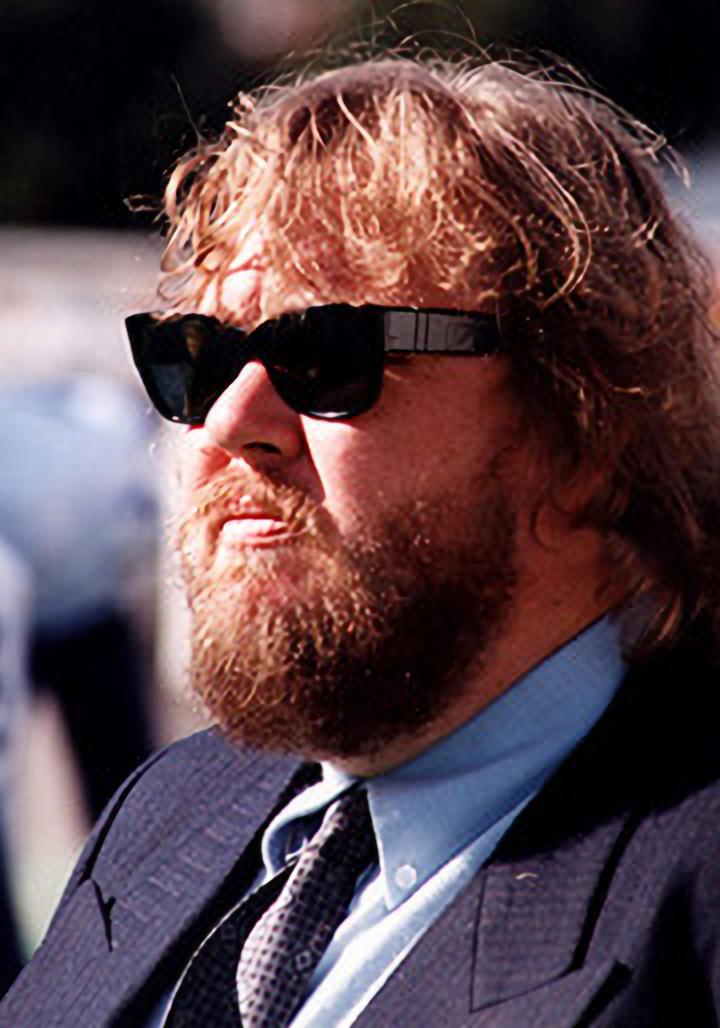
The name John Candy evokes an immediate, visceral warmth, a cascade of laughter, and a profound sense of geniality. From his indelible roles in cinematic touchstones like ‘Planes, Trains and Automobiles’ and ‘Uncle Buck’ to his groundbreaking work on ‘SCTV,’ he carved an extraordinary niche in the annals of comedy. His onscreen presence was a comforting, larger-than-life embrace, making him one of the most beloved figures in entertainment.
Yet, behind the jovial facade and the boisterous laughter that endeared him to millions, John Candy carried burdens that remained largely unseen by his adoring public. His final year, tragically cut short, was a complex tapestry woven with professional ambition, personal health struggles, and a poignant desire for a life he wouldn’t ultimately get to fully live. It was a period marked by both creative pursuit and an escalating battle with his own well-being, culminating in an untimely departure that left Hollywood and the world in shock.
In this in-depth exploration, we peel back the layers of John Candy’s last twelve months, moving beyond the beloved screen persona to uncover the man navigating immense pressures, both internal and external. We will examine the demanding circumstances of his final film, the health challenges that plagued him, his ventures into new creative territory, and the personal passions that fueled him, all leading to the heartbreaking events of March 4, 1994, in Durango, Mexico. It is a story not just of a comedic genius, but of a human being grappling with the very real complexities of life, amplified by the glare of the public eye.

1. **The Demands of ‘Wagons East’: A Grueling Swan Song**The winter of 1993 and early spring of 1994 found John Candy deep in the rugged landscapes of Durango, Mexico, working on what would tragically become his penultimate film, the wild west comedy ‘Wagons East.’ This production was a physically arduous undertaking, set against a backdrop of challenging desert conditions. The high temperatures, often exceeding 80 degrees Fahrenheit, coupled with long, grueling workdays, placed immense strain on an actor already contending with significant health issues.
The film required Candy, who was known for his generous frame, to portray a character in a period setting, demanding specific costume and movement requirements. The physical exertion involved in filming, especially for a man weighing close to 375 pounds at the time, was substantial. Sources from the set reported that the intensity of the shooting schedule and the environment left Candy visibly exhausted, a concern that would tragically foreshadow the events to come.
The context of ‘Wagons East’ being his final significant production underscores the professional drive that characterized Candy’s career, even as his health was in decline. He was committed to his craft, pushing himself to deliver performances, even under conditions that would challenge any individual, let alone someone with his specific health profile. The dedication he showed, despite the physical toll, speaks volumes about his work ethic and passion for entertainment.
2. **A Battle with Health: Obesity and Lifestyle Choices**John Candy’s struggle with his weight was a lifelong battle, openly acknowledged but deeply personal. At various points in his life, he reportedly weighed more than 375 pounds, a fact that cast a long shadow over his health. This obesity was compounded by other significant risk factors for heart disease, a condition that tragically ran in his family. His father, Sidney James, died of complications of heart disease at the young age of 35, when John was just four years old, a stark and early brush with mortality that must have lingered.
Beyond his genetic predisposition and obesity, Candy also contended with a lifestyle that contributed to his deteriorating health. He was a daily smoker, consuming a pack of cigarettes each day, and was known to drink alcohol. These habits, combined with his weight, created a perilous combination that placed an immense burden on his cardiovascular system. The context details his voracious appetite, with reports of him consuming six chickens or five pounds of ham at a single sitting, painting a picture of a man struggling with control over his eating habits.
Despite these challenges, Candy was not oblivious to his health. He was concerned about his weight and frequently engaged in diets and exercise routines with trainers. He once managed to lose an impressive 100 pounds over a summer while preparing for ‘Planes, Trains and Automobiles,’ demonstrating a capacity for significant change. However, the sustained effort required to maintain such a transformation proved immensely difficult, and the pressures of his career and personal struggles often led to a return of his unhealthy habits.

3. **The ‘Funny Fat Guy’ Persona vs. Personal Struggle**John Candy’s public image as the lovable, larger-than-life comedian was central to his appeal and career. His weight, far from being a hindrance, often became an integral part of his characters, contributing to their warmth, approachability, and the physical comedy that made him so endearing. He was, as he himself reportedly put it, “the funny fat guy,” a perception that audiences adored and critics often praised for its unique charm.
This carefully cultivated, and genuinely felt, public persona, however, stood in stark contrast to his private health concerns and aspirations for change. While he delighted audiences with his comedic use of his physique, privately, he was reportedly grappling with the serious health implications of his size. The statement, “‘I’m the funny fat guy. That’s my image. I can’t lose weight!'” attributed to him by a friend in Durango, offers a poignant glimpse into this internal conflict. It suggests a man trapped, in a way, by the very image that brought him success and affection.
The pressure to maintain his ‘image’ for career reasons might have inadvertently undermined his efforts to improve his health. This dynamic highlights the complex relationship between a performer’s public identity and their private reality. The world loved John Candy for who he was on screen, but that love inadvertently made it harder for him to shed the very aspects of his physical self that were contributing to his demise. It’s a tragic irony that adds another layer of poignancy to his story.
Read more about: From ‘Forever’ to ‘Forget It’: 14 Jaw-Dropping Tattoo Tales of Regret, Removal, and a Fresh Start
4. **Directorial Ambition: ‘Hostage for a Day’ (1994)**Beyond his celebrated acting career, John Candy possessed a burgeoning ambition to explore other facets of filmmaking. In 1994, the same year he passed away, he made his directorial debut with the comedy television film ‘Hostage for a Day.’ This endeavor marked a significant step in his professional journey, showcasing a desire to expand his creative horizons beyond performing.
Directing allowed Candy to exercise a different kind of creative control and vision, moving behind the camera to shape an entire narrative. This role demands a comprehensive understanding of storytelling, performance, and technical execution, indicating a sophisticated and evolving artistic sensibility. For a performer known for his improvisational prowess, taking on the structured role of a director was a notable evolution.
‘Hostage for a Day’ stands as a testament to John Candy’s versatility and his drive to continuously challenge himself. It suggests that even in his final year, he was not content to rest on his laurels but was actively seeking new avenues for artistic expression. This directorial effort, though perhaps overshadowed by his passing, is an important part of understanding his artistic trajectory and the potential he still held for future contributions to cinema.

5. **The Toronto Argonauts: A Champion Owner’s Pride**John Candy’s passions extended beyond the silver screen and into the world of sports, particularly Canadian football. In 1991, he joined forces with Bruce McNall and Wayne Gretzky to become co-owners of the Canadian Football League’s (CFL) Toronto Argonauts. This was more than just a celebrity endorsement; it was a genuine investment of time, emotion, and capital into a beloved national sport.
The celebrity ownership group brought a significant amount of attention to the Argonauts, creating a buzz around the team. Under their ownership, the team made substantial investments, notably signing highly touted National Football League prospects like wide receiver Raghib Ismail. This period of ownership culminated in a triumphant win for the Argonauts, as they took home the 1991 Grey Cup, beating Calgary 36-21 in the final.
While the Grey Cup victory occurred a few years before his death, Candy’s ongoing involvement and pride in the team remained a significant part of his life. His name, along with Gretzky’s, was later etched onto the Grey Cup trophy in 2007, acknowledging his crucial role. This ownership demonstrated his deep connection to his Canadian roots and his ability to contribute meaningfully to endeavors outside of entertainment, highlighting a multifaceted individual with diverse and fervent interests.

6. **The Last Day: Grueling Work and Profound Exhaustion**The final day of John Candy’s life, March 3, 1994, was emblematic of the relentless schedule he maintained, even in his declining health. He spent long, arduous hours filming ‘Wagons East’ in the demanding 80-degree-plus heat of Durango, Mexico. The physical toll of such a day, compounded by his existing health conditions, would prove to be catastrophic. He didn’t return to his rented house until 10 p.m., already utterly spent from the day’s labors.
Upon his return, Candy reportedly ate some spaghetti, a small respite before he decided to take a shower at 11 p.m. It was after this, shortly after midnight, that the night watchman at his home saw him for the last time. The watchman recounted seeing Candy step outside in his bathrobe for some fresh air before heading to sleep, clearly indicating the lateness of the hour and the exhaustive nature of his day.
His parting words to the night watchman were particularly poignant, revealing the depth of his fatigue and his longing for his family. He stated, “I’m so tired, all I want to do is go home and be with my family.” The watchman noted that while he had seen Candy tired before, he had “never as exhausted as this.” These final moments paint a vivid and heartbreaking picture of a man utterly drained, yearning for the comfort of home and family, unaware that he was taking his last breaths.
The sudden departure of John Candy on March 4, 1994, left an indelible void in the entertainment world, transforming the final year of his life into a poignant narrative of ambition, struggle, and an untimely end. While the circumstances surrounding his death were tragic, they also brought into sharp focus the immense pressures he navigated and the unfulfilled dreams that remained. As we continue our exploration, we turn our gaze to the immediate aftermath of his passing, the projects he left behind, and the enduring legacy that continues to resonate with millions.
Read more about: Behind the Scenes of Stardom: Unpacking Emily Deschanel’s Two-Year Retreat from Hollywood After ‘Bones’
7. **The Official Findings and Tragic Discovery**The morning of March 4, 1994, in Durango, Mexico, brought a devastating realization. After John Candy had retired to his rented home following an exceptionally grueling day of filming ‘Wagons East,’ his bodyguard, Gustavo Populus, entered the house after not hearing from him. The discovery was heart-wrenching, as Populus found Candy “lying in the bed, half in and half out,” tragically confirming his death.
Dr. Guillermo Pacheco Valenzuela, the medical examiner for the city of Durango, arrived hours later to conduct the official investigation. He found Candy in the position he had been discovered, noting that he was “wearing a long red and black checkered nightshirt down to his knees.” The doctor’s examination revealed the classic signs of death by heart attack, observing that Candy’s “mouth and fingertips were purple.”
Dr. Valenzuela further confirmed the severity of Candy’s health, estimating his weight “at between 350 and 375 pounds” and noting “rolls of fat on his belly and legs.” These findings underscored the immense strain his body had been under, providing a medical confirmation of the long-standing health battles that had silently plagued him. Before his body was transported, a local priest administered the last rites, a quiet and solemn farewell to a man who had brought so much joy to the world.
Read more about: Unraveling the Complexities of David Carradine’s Death: An In-Depth Examination of the Actor’s Final Hours
8. **The Ominous Echo of ‘Cursed Projects’**Beyond the films he completed, John Candy’s final years were also marked by a series of intriguing, yet tragically unfulfilled, cinematic aspirations. Among the most notable were three projects that have since gained an almost mythical, and eerily unfortunate, reputation within Hollywood, often referred to as “cursed projects.” These were film adaptations of John Kennedy Toole’s novel ‘A Confederacy of Dunces,’ Mordecai Richler’s ‘The Incomparable Atuk,’ and a biopic centered on the silent film comedian Roscoe “Fatty” Arbuckle.
Candy had been “in talks to portray Ignatius J. Reilly” in ‘A Confederacy of Dunces,’ a role that seemed tailor-made for his unique blend of pathos and humor. He had also “expressed interest in portraying Atuk” and the embattled silent film star “Fatty” Arbuckle. The profound tragedy associated with these roles stems from a chilling pattern: Candy, alongside other comedic luminaries like John Belushi, Sam Kinison, and Chris Farley, were all attached to these three specific projects at various points in their careers, and all died before any of them could be made.
The list of unfulfilled ventures extended beyond these infamous three. Candy was “originally considered to play Alec Guinness’s role” in a remake of the 1950 film ‘Last Holiday,’ with Carl Reiner slated to direct. He was also on the cusp of another collaboration with John Hughes, a comedy opposite Sylvester Stallone titled ‘Bartholomew vs. Neff,’ which would have seen them portray feuding neighbors. These projects, tantalizing glimpses of what might have been, speak to his continuous artistic drive and the diverse roles he sought to inhabit.
Even in animation, his presence was sought, only to be cut short. The role of Redfeather the Turkey in Disney’s animated film ‘Pocahontas’ was specifically “written for him,” but was subsequently removed from the film after his death. Furthermore, the master of horror, Stephen King, “reportedly wanted Candy to portray Billy Halleck” in the film adaptation of his novel ‘Thinner,’ showcasing the breadth of genres interested in his talent. These lost opportunities paint a bittersweet picture of a creative force gone too soon.

9. **Posthumous Releases: His Final Cinematic Bows**Although his life was tragically cut short, John Candy’s artistic contributions continued to grace the screen in the years immediately following his passing. His final two film appearances, ‘Wagons East’ (1994) and ‘Canadian Bacon’ (1995), stand as a poignant testament to his dedication, both ultimately dedicated to his memory. These films allowed audiences one last opportunity to experience the unique warmth and comedic brilliance he brought to every role.
‘Wagons East,’ the film he was actively working on at the time of his death, presented a unique challenge for its completion. Released five months after Candy’s death, the production team resorted to using a “stunt double and special effects” to finish the project. This meticulous effort ensured that his performance, though interrupted, could still be presented to the public, a final act in a challenging production.
His truly final completed film, however, was Michael Moore’s satirical comedy ‘Canadian Bacon,’ which premiered a year after his death. In this memorable role, Candy portrayed American sheriff Bud Boomer, who leads a comical “invasion” of Canada. This film provided a fittingly humorous, albeit unexpected, closing chapter to his extensive filmography, showcasing his talent even in a political satire.
Beyond the big screen, Candy had also lent his voice to an animated television film titled ‘The Magic 7’ in the early 1990s. This project, unfortunately, faced significant production delays and animation difficulties, remaining in production for years before it was eventually shelved. Though unreleased, it further illustrates his versatility and commitment to various entertainment mediums right up until his final days.

10. **Unfulfilled Creative Horizons and Lost Potential**John Candy’s passing not only robbed the world of his immediate comedic gifts but also halted a burgeoning trajectory of creative evolution. His directorial debut with ‘Hostage for a Day,’ a significant step towards expanding his artistic control, was merely a glimpse of a potential future behind the camera. This venture suggested a mind eager to explore storytelling from a broader perspective, moving beyond the confines of performance to shape entire narratives.
The array of unmade projects, from the highly anticipated ‘A Confederacy of Dunces’ to the biopics of ‘Atuk’ and ‘Fatty’ Arbuckle, underscored his ambition to tackle roles with greater dramatic depth and complexity. These were not mere comedic vehicles but opportunities for profound character studies, indicating a desire to challenge audience perceptions and showcase a versatility that was perhaps only beginning to fully unfold. The tragic irony is that these roles, which could have redefined his career, became poignant symbols of unfulfilled promise.
His interest in the ‘Last Holiday’ remake and the ‘Bartholomew vs. Neff’ comedy with Sylvester Stallone demonstrated his eagerness to collaborate with diverse talents and explore different narrative dynamics. These were not just job opportunities but creative partnerships that hinted at new directions for his career. The collaborative spirit that defined his work with ‘SCTV’ and John Hughes was poised to extend into fresh and exciting territories.
The scrapped animated role in ‘Pocahontas’ and Stephen King’s reported desire for him in ‘Thinner’ further illustrate the breadth of his appeal across genres and mediums. From family-friendly animation to dark psychological thrillers, Candy was a coveted talent. His untimely death left a myriad of creative avenues unexplored, leaving fans to ponder the artistic masterpieces and unforgettable performances that could have been, forever altering the landscape of future cinematic history.
Read more about: Not Just Picky: 12 Game-Changing Habits That Prove You’re Too Good to Settle for Less
11. **Enduring Tributes and Official Recognitions**The impact of John Candy’s life and work extended far beyond the immediate grief of his passing, evolving into a series of heartfelt and official tributes that continue to honor his memory. His profound contributions to Canadian and international entertainment were formally recognized when he was posthumously inducted into Canada’s Walk of Fame in 1998, cementing his place among the nation’s most celebrated figures.
Further demonstrating his national significance, in May 2006, Candy became one of the first four entertainers ever honored by Canada Post, a distinctive recognition that saw his image featured on a postage stamp. This rare tribute underscored his iconic status and the deep affection Canadians held for him. The city of Toronto, his childhood home, also paid a special homage on October 31, 2020, when Mayor John Tory proclaimed “John Candy Day” in honor of what would have been his 70th birthday.
His influence also resonated within specific communities he cherished. ‘Blues Brothers 2000,’ a sequel to the film in which he played a memorable supporting role, was dedicated to three individuals, including Candy. Additionally, his enduring connection to Canadian football was celebrated at the 2007 Grey Cup festivities in Toronto, where Dan Aykroyd hosted a special tribute, acknowledging Candy’s pivotal role in the Toronto Argonauts’ 1991 Grey Cup victory.
These varied recognitions, from national honors to specific industry accolades, collectively paint a picture of a man whose legacy transcended his lifetime. They serve as a lasting acknowledgment of his comedic genius, his passion for his country, and the profound joy he brought to countless lives, ensuring his memory remains vibrant and celebrated for generations to come.
Read more about: Neale Fraser, Australian Tennis Ace and Davis Cup Icon, Dies at 91: A Legacy of Grand Slams, Unwavering Leadership, and Deep Patriotism

12. **A Legacy of Inspiration and Unforgettable Warmth**More than just an actor, John Candy cultivated a legacy defined by warmth, generosity, and an inspiring work ethic that continues to influence those in the entertainment world and beyond. The experimental rock band Ween touchingly dedicated their 1994 album ‘Chocolate and Cheese’ in his “loving memory,” with lead singer Gene Ween noting, “There was so much going on about [the suicide of] Kurt Cobain, and nobody mentioned John Candy at all. I have a special little spot in my heart for him.” This sentiment reflected a widespread, quiet grief for a truly beloved figure.
His profound connection to his roots is enshrined at his alma mater, Neil McNeil Catholic High School in Toronto, where the John Candy Visual Arts Studio was dedicated in his honor. During one of his annual visits, Candy famously stated, “My success is simply rooted in the values and discipline and respect for others that I was taught at Neil McNeil,” a powerful testament to the formative influence of his early life on his illustrious career. Such words resonate with aspiring artists and remind us of the enduring power of foundational values.
There have even been suggestions, notably that the Canadian Screen Awards be officially nicknamed “The Candys,” not only as a tribute to the actor but also as a distinctly Canadian identifier. This idea encapsulates the deep cultural imprint he left on his home country. His influence extended personally to emerging talents, as American comedian Conan O’Brien credits Candy with pivotal advice that shaped his career: when O’Brien mentioned considering comedy, Candy sagely replied, “You don’t try comedy. You do it or you don’t do it.” This unflinching honesty, devoid of cynicism, speaks volumes about Candy’s character.
The ongoing relevance of his life and impact is further illuminated by recent projects, including the documentary film ‘John Candy: I Like Me,’ directed by Colin Hanks and produced by Ryan Reynolds, which is set to premiere in 2025. Archival footage of Candy also appeared in ‘You Had To Be There,’ another documentary exploring the vibrant Toronto comedy scene that birthed many talents. These projects ensure that the story of John Candy, a man whose laughter filled our screens and whose heart touched so many, continues to be told, celebrating not just a comedian, but a profound and inspiring human being.
Read more about: From Sitcoms to Renovations: 14 Beloved Home Improvement Personalities We’ve Lost
John Candy’s final year was a microcosm of his extraordinary life: a testament to relentless ambition, profound personal battles, and an unwavering commitment to his craft. His legacy is not merely in the laughter he provoked but in the enduring warmth he radiated, the inspiration he provided, and the poignant reminder that even the brightest stars grapple with unseen struggles. He remains, unequivocally, a cherished figure whose memory continues to brighten our collective cultural landscape, a true Canadian treasure whose light, though extinguished too soon, continues to shine brightly through the timeless joy he gifted the world.







